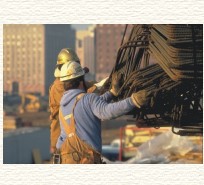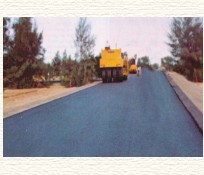
HEALTH, SAFETY, SECURITY & ENVIRONMENT STANDARDS (HSSE) __________________________________________________________________
|
5.
|
Occupational Health and Hygiene. | |
|
5.1
|
The Safety Incharge shall be responsible for the medical welfare of its own and its sub-contractor personnel and shall provide for: | |
|
|
Facilities for administering first aid | |
|
|
Periodic medical examinations | |
|
|
Arrangements for professional medical treatment | |
|
|
Hospitalization | |
|
5.2
|
The Safety Incharge shall ensure that all its personnel and its subcontractor's personnel are medically fit to perform work. | |
|
5.3
|
The Safety Incharge shall ensure that its personnel is provided (e.g. contractor huts) and shall comply with the company' standards for: sanitation, sewage, water supply, sleeping quarters, food establishments, laundry and garbage disposal. | |
|
6.
|
Enviroment | |
| The Safety Incharge shall pay due regard to the environment by preserving air, water, soil, animal and plant life from adverse effects of the construction activities, and minimizing any nuisance which may arise from such operations. | ||
|
7.
|
Alcohol and Drugs | |
| The Safety Incharge shall ensure that any time during the performance of the work its personnel are neither under the influence of nor partake of any alcoholic liquor, drug or other intoxicating substance, other than for bona fide medical reasons or other proper reasons. | ||
|
8.
|
Technical Safety Audit by the Company | |
| The Safety Incharge shall allow the company Representatives and nominees access at any time to plant, equipment, personnel and records when requested, to enable the company to inspect or audit any aspect of the operations relevant to safety and the work environment. | ||
|
9.
|
Conduct of Contractor's Personnel | |
| The Project Manager/ Safety Incharge shall instruct site personnel to comply with the following: | ||
|
|
No one shall enter any part of the site, including the work site, other than for the purpose of carrying out the work. | |
|
|
Smoking on the Company's premises is strictly forbidden, except in the authorized smoking rooms or other designated areas. Anybody found smoking outside the authorized smoking rooms or designated areas will be immediately removed from the company's premises. | |
|
|
Personal protective equipment shall be provided and be used and worn in accordance with the safety regulations. | |
|
|
It is essential that good housekeeping be maintained throughout the period of any work, both at the work site area and in and around any temporary buildings. The working area shall be kept tidy at all times, escape and other access ways kept clear, safety equipment kept accessible, and surplus/scrap material removed daily. Cleaning up only at the end of a job is not considered sufficient. Spillage of oil or chemicals shall be cleared up immediately in view of the hazards from fire, slippery surfaces, toxic substances, etc. appropriate safety precautions shall be taken during the clearing up. | |
|
10.
|
Summary of Safety Policy | |
| Purpose: | ||
|
1.
|
To instill a safe working culture. | |
|
2.
|
To ensure customer's safety/convenience. | |
|
3.
|
To achieve zero lost time injury (LTI). | |
|
4.
|
To eliminate disruptions to business. | |
|
5.
|
To eliminate damage to asset. | |
|
6.
|
To eliminate damage to environment. | |
| Major Infringements: | ||
|
1.
|
No safety helmet. | |
|
2.
|
No safety shoes. | |
|
3.
|
No scaffolding and Safety harness/belt whilst working at height (above 2m). | |
|
4.
|
No goggles, glove & ear plug whilst hacking, grinding and cutting. | |
|
5.
|
No welding hoods whilst welding. | |
|
6.
|
Smoking on-site except designated area at NTI sites. | |
|
7.
|
Unsafe electrical equipments (damaged cable, loose connection, no conduits). | |
|
8.
|
Damaging company asset (building and equipment). | |
|
9.
|
Poor housekeeping. | |
|
10.
|
Product Spillage due to negligence. | |
|
11.
|
No work permit, expired work permit or not complying to requirement specified in work permit. | |
|
12.
|
Alcohol/drugs consumption during work. | |
|
13.
|
Absence of warning sighs/barricades around working area e.g. traffic cones, red white tape, vest & flag man for road works. | |
|
14.
|
Failure to isolate power supply at switchboard with sufficient signage. | |
|
15.
|
No explosion-proof equipment for works in hazardous areas. | |
|
16.
|
Absence of either Site Supervisor or Safety Officer at any time during working hours at the construction sites. | |
|
17.
|
Using hand-phone within the hazardous area. | |


